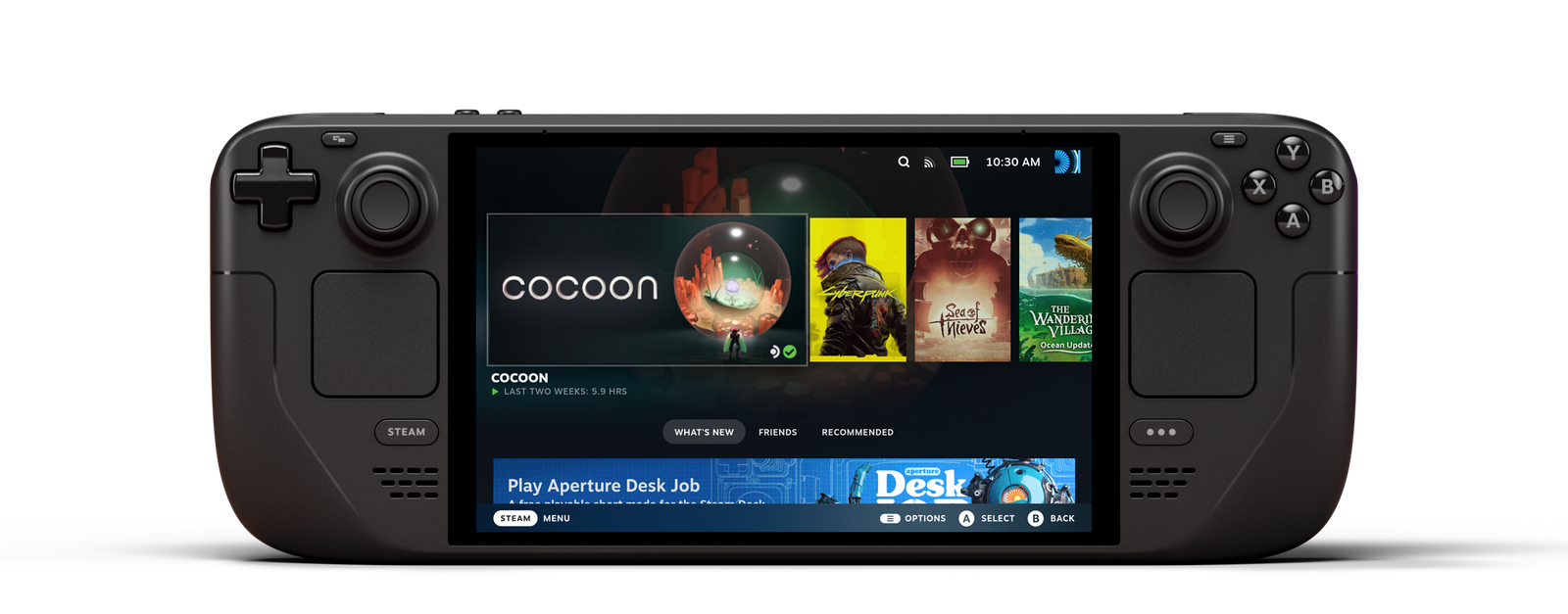![The 17 Best Game Design Colleges in US [2025 Industry Picks] 2 Article Image](https://wsstgprdphotosonic01.blob.core.windows.net/photosonic/91ee35b9-59f2-499b-b4b2-ac458d3550b5.png?st=2025-03-28T15%3A29%3A51Z&se=2025-04-04T15%3A29%3A51Z&sp=r&sv=2025-05-05&sr=b&sig=FYx0pgA%2Bn%2BbR43JeGvDszQ%2Bsk8ULZ%2BdYVHs5PziArmQ%3D)
Game design colleges have become more competitive than ever. Students submitted 5,516 game projects this year, showing a 23% increase from last year.
A detailed review of more than 500 schools across 107 countries has revealed the best institutions for game design education. The evaluation involved 140 industry professionals who helped identify these leading schools. Top universities like USC, Carnegie Mellon, and Stanford consistently rank high by offering programs that blend innovative technology with real-world training.
This piece dives into 17 top-ranked US schools for game design, based on data from 150 institutions. Each school’s curriculum strength, industry connections, and student success rates were analyzed to help future game designers choose the right path for their education.
University of Southern California (USC)
![The 17 Best Game Design Colleges in US [2025 Industry Picks] 3 Image](https://wsstgprdphotosonic01.blob.core.windows.net/photosonic/005bedbb-97d5-4862-b783-46de8004e2cb.jpeg?st=2025-03-28T15%3A29%3A38Z&se=2025-04-04T15%3A29%3A38Z&sp=r&sv=2025-05-05&sr=b&sig=%2Bi/oKrfMfEmV4VxPD4LWUG9oIEDCQrnGJgAlpCTaY5w%3D)
Image Source: games.usc.edu
Princeton Review has ranked USC’s game design program #1 in North America for over 10 years. University of Southern California stands at the vanguard of game development education. USC Games brings together the School of Cinematic Arts’ Interactive Media & Games Division and the Viterbi School of Engineering’s Computer Science Department through a powerful collaboration.
USC Game Design Program Overview
USC’s game design education offers multiple degree paths that include BFA programs in Game Art, Game Development and Interaction Design, and Themed Entertainment, along with graduate-level degrees. Students learn from a curriculum blending liberal arts foundations with specialized industry knowledge and team-based projects. The program’s STEM coding reflects its technical depth and industry relevance.
Industry Partnerships and Connections
Major companies maintain strong ties with the program through strategic collaborations. Electronic Arts supports the Interactive Entertainment Program and has funded the EA Endowed Faculty Chair. Microsoft contributes to the program through their Next Generation Entertainment Initiative. Sony Interactive Entertainment has pledged $3 million to support USC Games Gerald A. Lawson Fund. These industry connections give students valuable research opportunities and professional networking advantages.
Notable Alumni Success Stories
USC Games alumni have built remarkable careers throughout the gaming industry. They now work at companies of all sizes including Electronic Arts, Activision Blizzard, Disney Interactive Games, and Naughty Dog. The program has launched many successful games that started as student projects. Graduates Jenova Chen and Kellee Santiago created “flOw” and later founded thatgamecompany, signing a three-game deal with Sony.
Admission Requirements and Acceptance Rate
The program maintains highly selective admission standards. Applicants must show their artistic and technical abilities through creative portfolios. They need to submit personal statements about their interest in interactive entertainment and detailed descriptions of team projects. Faculty members assess applications based on originality, clarity, personal insight, and artistic excellence.
Tuition and Financial Aid Options
USC’s estimated cost for 2024-2025 reaches $270,000 including mandatory fees, with yearly living expenses around $24,160. While costs are significant, students can access many financial support options, including the Gerald A. Lawson Fund for underrepresented students. USC has awarded $814 million in financial aid, and Merit Scholarships went to 20% of the 2022 first-year class.
Carnegie Mellon University
![The 17 Best Game Design Colleges in US [2025 Industry Picks] 4 Image](https://wsstgprdphotosonic01.blob.core.windows.net/photosonic/d4bd3dd0-ca63-4ffb-b1e9-c3a600a2a8d2.jpeg?st=2025-03-28T15%3A29%3A36Z&se=2025-04-04T15%3A29%3A36Z&sp=r&sv=2025-05-05&sr=b&sig=52GjnsvvQ87RxwhAn2jwRBWOThvzhLBdHSTjkI%2BMnWc%3D)
Image Source: Wikipedia
Carnegie Mellon University’s Entertainment Technology Center (ETC) has offered a unique blend of game design studies since 1998. The center emerged from a joint effort between the College of Fine Arts and the School of Computer Science.
Program Specializations and Curriculum
The ETC runs the well-known Master’s in Entertainment Technology (MET), a two-year terminal degree. Students head over to core areas like Building Virtual Worlds and Fundamentals of Entertainment Technology. They can focus on these key areas:
- Game Design
- Interactive Storytelling
- Themed Entertainment
- Leadership & Innovation
The IDeATe Game Design Minor welcomes undergraduate students from any of Carnegie Mellon’s 7,000+ major/minor combinations. Students need 45 units to complete their studies in game programming, mechanics design, narrative development, and user testing.
State-of-the-Art Facilities
Students enjoy exceptional resources at Carnegie Mellon. The Human-Computer Interaction Institute runs several specialized facilities. The Center for Transformational Play offers physical prototyping materials, digital tools, and a vast game library. The Augmented Design Capability Studio gives students access to detailed maker spaces with electronics workbenches and advanced recording setups. Hunt Library’s IDeATe facilities feature shared classrooms and labs with laser cutters, 3D printers, motion capture systems, and tools that support hands-on learning experiences.
Faculty Expertise and Industry Background
The program features notable experts like Jessica Hammer, an Associate Professor who works with both the HCI Institute and ETC. Her research centers on transformational games. Faculty members bring rich academic and professional experience to help students understand how design quality shapes interactions between people and technology.
Career Placement Statistics
Carnegie Mellon graduates land jobs at leading companies regularly. Many join major players like Amazon, Epic Systems, Apple, Google, Microsoft, 2K Games, Meta, and 31st Street Studios. The Career and Professional Development Center tracks detailed first destination outcomes, gathering data about hiring companies, starting salaries, and where graduates work.
DigiPen Institute of Technology
![The 17 Best Game Design Colleges in US [2025 Industry Picks] 5 Image](https://wsstgprdphotosonic01.blob.core.windows.net/photosonic/679aa944-6be9-4b7e-9872-f6f329cd2417.jpeg?st=2025-03-28T15%3A29%3A37Z&se=2025-04-04T15%3A29%3A37Z&sp=r&sv=2025-05-05&sr=b&sig=3YsZ2uk9t33o4tjuVjcnCPyFiuxqBlgQ1IJBUTlSe8M%3D)
Image Source: DigiPen
DigiPen Institute of Technology stands as a top destination for aspiring game designers and developers with its 30-year legacy in game education. The Princeton Review has ranked DigiPen among the top ten game design schools every year since 2009.
DigiPen’s Unique Approach to Game Education
The school sets itself apart with a project-based curriculum that mirrors real-life game development environments. Faculty members say, “Game project classes are the secret sauce of DigiPen”. Students can choose from several specialized degree paths:
- BA in Game Design – Combines game design theory with social sciences and humanities
- BS in Computer Science and Game Design – Creates hybrid engineer-designers versatile for professional teams
- BS in Computer Science – Provides foundations in math and computer science for games and simulations
Teams start collaborating in their first semester, which helps them experience professional game studio structures.
Student Game Projects and Portfolio Development
Game projects are the life-blood of DigiPen’s educational philosophy. Students start developing prototypes, creating game art, and building working game engines from their first day. Senior lecturer Ellen Beeman puts it well: “Game projects are where our students take everything they’ve learned in all of their classes and bring it together to make something amazing”.
The annual Game Showcase marks the end of this journey, where students present their original creations to the public. Students showed off diverse projects at the 2023-2024 showcase, from dance-battling worms to first-person sticky hand games.
Industry Recognition and Achievements
DigiPen’s approach has earned major industry recognition beyond its consistent Princeton Review rankings. Students create games in all genres from “quirky 2D puzzlers to immersive 3D adventures”, and many games are available to download and play on Windows.
Tuition and ROI Analysis
Georgetown University’s Center on Education and the Workforce ranks DigiPen as Washington state’s best higher education institution for return on investment. Their study shows DigiPen students’ 40-year net present value at $1,616,000, ranking 35th highest nationally. The investment is substantial – annual tuition and fees cost $34,900, with a four-year total estimate of $158,404. DigiPen graduates typically recover their education investment within 3.2 years after graduation.
Rochester Institute of Technology
![The 17 Best Game Design Colleges in US [2025 Industry Picks] 6 Image](https://wsstgprdphotosonic01.blob.core.windows.net/photosonic/b728c9a8-fe58-4118-b621-779019cd5a86.png?st=2025-03-28T15%3A29%3A36Z&se=2025-04-04T15%3A29%3A36Z&sp=r&sv=2025-05-05&sr=b&sig=2SRJKja/wcS/aqJXkrpd/j4ThHx5iFFsWUUbdv45o7U%3D)
Image Source: Rochester Institute of Technology
Rochester Institute of Technology ranks among the best game design colleges with its stellar performance and exceptional industry outcomes. The Princeton Review’s 2024 international rankings placed RIT’s game design programs 6th for undergraduate and 8th for graduate studies.
Game Design and Development Programs
The School of Interactive Games and Media (IGM) in the Golisano College of Computing and Information Sciences offers detailed game education at RIT. The programs showcase impressive achievements:
- Animation Career Review ranks the game design BS degrees 4th
- BS graduates achieve 82% outcomes rate with average first-year salaries of $83.6K
- MS graduates reach 100% outcomes rate with median first-year salaries of $108K
Students learn both technical development and creative design elements, which prepares them for careers in gaming and interactive media.
Cross-Disciplinary Opportunities
Students can test different computing fields through RIT’s computing exploration (CompEx) program before choosing their major. The New Media Interactive Development program lets students mix software development, design, and cybersecurity. This approach creates graduates who excel where technology meets creativity.
Industry Connections and Internship Placements
Cooperative education is the life-blood of RIT’s game design education. Students gain two blocks of full-time, paid experience in the gaming industry. The university’s Office of Career Services organizes Creative Industry Day to connect students with companies, creative agencies, and design firms. These opportunities have launched careers at Rockstar Games, Electronic Arts, Epic Games, and Microsoft.
Campus Resources for Game Designers
RIT’s MAGIC Center operates as both a nonprofit R&D laboratory and a for-profit production studio that helps students market their digital media creations. MAGIC Spell Studios focuses on growing new companies and publishing student projects. The center features five state-of-the-art classrooms with industry-standard hardware and software. Sound stages and post-production studios bring simplified processes to education.
New York University (NYU) Tisch School of the Arts
Image Source: NYU | Game Center
The NYU Game Center at Tisch School of the Arts stands at #1 for game design according to The Princeton Review’s rankings of 150 surveyed institutions. This achievement places it among the best game design colleges in the country.
Game Center Program Structure
Students can choose between a 4-year BFA and a 2-year MFA in Game Design. The original curriculum gives students a solid foundation in game literacy, criticism, visual communication, and programming. Students then shape their own path through elective courses. Both degrees conclude with substantial thesis or capstone projects that showcase professional-level skills.
NYC Location Advantages
The Game Center’s home in the 370 Jay Street building on NYU’s Brooklyn campus serves as a hub for New York City’s vibrant game development community. Students create games in the open workspace, especially during weekly playtest events. This strategic location connects students with creative industries of all types and helps them build professional networks they’ll need after graduation.
Faculty Profiles and Expertise
NYU’s faculty brings ground expertise right into the classroom. Award-winning designers and entrepreneurs Frank Lantz and Eric Zimmerman teach here, along with influential scholars Clara Fernández-Vara and Charles Pratt. Yes, it is worth noting that all professors maintain active careers while teaching.
Student Showcase Opportunities
The NYU Game Center’s annual showcase features at least 50 student-created games across digital, tabletop, and experimental formats. This key event attracts over 500 attendees – recruiters, investors, academics, and journalists. Many showcase projects have turned into commercial successes, winning major awards and launching on multiple platforms.
Tuition and Scholarship Information
NYU’s game design students can access several specialized scholarships. These include the full-tuition Barlovento Scholarship for women, the Take-Two Scholarship covering quarter-tuition for three graduate students, and the $25,000 Festival Scholarship for talented developers. Starting Fall 2024, NYU Promise will cover full tuition for undergraduates whose family income is under $100,000. This makes the elite program available to talented students whatever their financial situation.
University of Utah
![The 17 Best Game Design Colleges in US [2025 Industry Picks] 8 Image](https://wsstgprdphotosonic01.blob.core.windows.net/photosonic/c29463cf-444c-49fc-8e89-3e6b058c361f.jpeg?st=2025-03-28T15%3A29%3A36Z&se=2025-04-04T15%3A29%3A36Z&sp=r&sv=2025-05-05&sr=b&sig=E52D30D4d%2Be2lpSIFXNT8GWqggD7bjD5KtjwlqqurY4%3D)
Image Source: The University of Utah
The University of Utah’s Division of Games has risen to the top, claiming the #1 position worldwide for public institutions in undergraduate programs and #2 for graduate programs in the 2024 Princeton Review rankings. This achievement shows how the program has grown into one of the best game design colleges in America.
Entertainment Arts and Engineering Program
The 17-year-old game design program became a division in 2017 and grew to become the 8th largest major on campus. Students learn a mix of art, humanities, social science, and computational research to prepare for careers in gaming. The university charges 77% less than other top-five ranked institutions. This makes it an affordable choice among elite game design colleges. Students can choose from several degrees including a Bachelor of Science in Games, Master of Entertainment Arts and Engineering, and a dual MBA/MEAE degree for those interested in gaming business.
Research Opportunities
Faculty members lead innovative research in games for health, learning and training, modeling and simulation, and game artificial intelligence. The university plans to invest $25 million to expand research capabilities. The GApp Lab stands out as a unique space where student game developers team up with faculty researchers to create software that solves real-life problems. Students get hands-on experience beyond traditional game development through these cross-disciplinary projects.
Industry Partnerships in Salt Lake City
Salt Lake City offers a thriving game development ecosystem. The Wall Street Journal ranked it as the hottest job market in 2023, with 21 game companies based in Utah. Local connections help students land internships and jobs. Notable alumni include Doug Bowser, president of Nintendo of America, and Nolan Bushnell, founder of Atari and creator of “Pong”. John Blackburn, vice president at Warner Bros. Games’ Avalanche Software, credits University of Utah graduates in part for the success of 2023’s bestselling game “Hogwarts Legacy”.
Student Success Metrics
The program focuses on practical results. Students must publish a game before graduating. By April 2024, students will have published 149 games, most of them available on Steam. Students keep ownership of their creations, which encourages an entrepreneurial mindset. Alumni have created games worth more than $2 billion in lifetime revenue, with over $1 billion coming from Utah-based studios. These numbers show why the University of Utah ranks consistently among the top game design colleges for students seeking academic excellence and real-life industry preparation.
Michigan State University
![The 17 Best Game Design Colleges in US [2025 Industry Picks] 9 Image](https://wsstgprdphotosonic01.blob.core.windows.net/photosonic/0644ec36-bf6a-4c9e-b76f-9fff288f4fc2.png?st=2025-03-28T15%3A29%3A37Z&se=2025-04-04T15%3A29%3A37Z&sp=r&sv=2025-05-05&sr=b&sig=hp4o9ir/lZYT7FBBRgdVv%2BI5vZA2GcIftYuDZdgsK8E%3D)
Image Source: ComArtSci at MSU – Michigan State University
Michigan State University ranks #1 in the Midwest and #10 nationally on The Princeton Review’s prestigious list of top game design colleges. The Game Design and Development Program, now 19 years old, has grown into a complete educational experience since its start in 2005.
Game Design and Development Specializations
The Games and Interactive Media BA program gives students three distinct focus areas: Game Design, Games Graphics and Animation, and Game Development. Students learn through projects that build both theoretical foundations and practical skills. The curriculum covers art, design, programming fundamentals, history, social impacts, and business aspects of games. Students build impressive professional portfolios and develop team collaboration skills through their core coursework.
Facilities and Technology Resources
MSU’s exceptional Games for Entertainment and Learning (GEL) Lab provides state-of-the-art technology to design prototypes and advance research on digital games. The Game Dev Teaching Studio in Room 154 of the ComArtSci building features high-end graphics workstations, tablet-enabled monitors, motion capture equipment, and mobile team desks. These facilities support hands-on game development education.
Research Initiatives
The GEL Lab leads MSU’s gaming research by creating innovative prototypes and games for entertainment and learning. Students work on projects funded by organizations like the National Science Foundation, NASA, and the Ford Motor Company Fund. The lab has created over 30 games that use virtual reality, mobile platforms, and web-based applications.
Career Outcomes for Graduates
MSU alumni work in various roles including:
- Game designers and developers
- Interactive media and multimedia designers
- Narrative designers and technical artists
- Platform engineers and infrastructure specialists
Top companies like Electronic Arts, Activision, Rockstar, Blizzard, Bungie, and Insomniac employ many MSU graduates.
Tuition and Financial Support
MSU combines academic excellence with affordable tuition options. The 2024-25 annual costs for in-state students are approximately $35,588 (including $16,118 tuition), while out-of-state students pay $64,250 ($43,502 tuition). The university distributed $790 million in financial aid (2021-22), and 95% of first-year students received assistance.
Drexel University
![The 17 Best Game Design Colleges in US [2025 Industry Picks] 10 Image](https://wsstgprdphotosonic01.blob.core.windows.net/photosonic/8202c16b-68a1-41ec-9ad7-ec1955b0a93d.png?st=2025-03-28T15%3A29%3A36Z&se=2025-04-04T15%3A29%3A36Z&sp=r&sv=2025-05-05&sr=b&sig=gtgZYVjhmtn9AWNsf5NA6z//UvWsdqS/HdT89qyIwaA%3D)
Image Source: Drexel Game Design – Drexel University
Drexel University stands out among top game design colleges through its renowned cooperative education model, offering students authentic industry experience as a degree requirement rather than an optional component.
Co-op Program and Industry Experience
Primarily, what distinguishes Drexel is its flexible co-op structure – students can choose between a four-year plan with one six-month co-op or a five-year plan with three co-ops. This extended professional experience provides game design students with critical networking advantages and portfolio-building opportunities. Students secure positions at impressive companies including Activision, EA Games, Rockstar Games, Blizzard, Epic Games, Comcast, and Amazon Robotics. Throughout their co-op experiences, students receive structured training in resume building, portfolio development, and interviewing skills, preparing them for competitive industry positions.
Curriculum Highlights
Drexel’s Game Design & Production program equips students with comprehensive training across all areas of game creation. The curriculum combines foundational design concepts with project-based teamwork that mirrors actual game studio environments. Unlike traditional programs, Drexel connects theory with immediate practical application, positioning graduates for careers in both entertainment gaming and the expanding simulation/training industries.
Philadelphia Gaming Scene Connections
Philadelphia boasts a robust digital and tabletop development community, recognized as one of America’s most walkable cities with excellent public transit. On campus, organizations like the Drexel Gaming Association and Drexel Game Developers Group foster community engagement. Yet Drexel’s most valuable asset is the Entrepreneurial Game Studio (EGS), an incubator housed in the ExCITe Center that provides space, mentorship, and funding to student-created game companies.
Graduate Success Stories
Alongside traditional employment paths, many Drexel alumni establish their own gaming ventures. Notable successes include award-winning teams like Pharaoh Hound Games, winners of the E3 College Game Competition, and SplitSide Games, recipients of Intel’s University Game Showcase prize. Graduates work at leading companies including 343 Industries, Activision, Blizzard, Disney, EA Games, Epic Games, Microsoft, and Sony, holding diverse positions from Art Directors to Senior Animators and Program Managers.
Savannah College of Art and Design (SCAD)
![The 17 Best Game Design Colleges in US [2025 Industry Picks] 11 Image](https://wsstgprdphotosonic01.blob.core.windows.net/photosonic/11a7c06c-ce0a-4d83-8220-8534f99264fb.jpeg?st=2025-03-28T15%3A29%3A37Z&se=2025-04-04T15%3A29%3A37Z&sp=r&sv=2025-05-05&sr=b&sig=54vJwY/j3m0yuNv2CJboYoF%2BfwdywljG23ui9czQeIY%3D)
Image Source: SCAD.edu
Savannah College of Art and Design (SCAD) stands out with its exceptional artistic education. The college’s interactive design and game development programs give students the skills they need to build successful careers in gaming.
SCAD Game Design Program Features
SCAD’s game development program comes with both B.F.A. and B.A. options. The B.F.A. needs 75 hours of major curriculum while the B.A. requires 50 hours. Students work on real projects and build stunning portfolios that open doors to professional opportunities. They can also pursue double majors or related minors. This helps them develop unique skill sets through SCAD’s 28 distinct STEM degree programs.
Industry-Standard Facilities
SCAD has invested heavily in professional-grade facilities. Their Atlanta and Savannah campuses feature state-of-the-art resources. The expanded Savannah Film Studios now has a 5,500-square-foot LED volume stage. This stage uses camera tracking and live rendering to create immersive virtual mixed reality environments. Students also get access to a dedicated professional production studio with industry-standard hardware, workstations, and software.
Faculty Expertise
The interactive design and game development professors bring rich experience from prominent gaming companies:
- Acclaim Entertainment
- Activision
- Bluesky Studios
- Kaos Studios
- Nickelodeon Digital
These award-winning artists and sought-after designers help students build industry connections. They bring in guest speakers, provide critiques, and review portfolios. These often lead to internships and job opportunities.
Career Preparation and Placement Services
SCAD’s office for career and alumni success offers detailed services. Students get help with résumé development, portfolio building, mock interviews, self-promotion, and internship hunting. Major companies like Blizzard Entertainment, Google, IBM, Microsoft, and Riot Games visit the campus regularly. Their representatives interview students and review portfolios.
Tuition and Scholarship Opportunities
Full-time undergraduate students pay $41,130 in annual tuition. This covers three courses per quarter for three quarters. SCAD has multiple scholarship options available. These include Academic Scholarships, Achievement Scholarships, and specialized underrepresented student scholarships. Students can also get need-based grants, making this top-tier game design education more available to everyone.
Rensselaer Polytechnic Institute
![The 17 Best Game Design Colleges in US [2025 Industry Picks] 12 Image](https://wsstgprdphotosonic01.blob.core.windows.net/photosonic/49fe8f39-d57f-4b76-9fad-9efe04370e9d.jpeg?st=2025-03-28T15%3A29%3A37Z&se=2025-04-04T15%3A29%3A37Z&sp=r&sv=2025-05-05&sr=b&sig=FmJOXk7q1hbTrM22aVIkvWHOSBN4kLDBc9nX/Suya18%3D)
Image Source: Humanities, Arts, and Social Sciences – Rensselaer Polytechnic …
Rensselaer Polytechnic Institute takes a complete approach to game education through its Games and Simulation Arts and Sciences (GSAS) program. New York State recognizes it as a Center of Excellence in Digital Game Development.
Games and Simulation Arts and Sciences Program
RPI’s GSAS degree creates a balanced educational experience that covers technical, creative, social, and cultural aspects of games and simulation. Students work together across disciplines to gain diverse skills needed for industry success. They become proficient in at least one programming language and expert game developers while building strong portfolios of research and creative works.
Interdisciplinary Approach
The curriculum offers several concentrations that showcase the many sides of game design:
- Cognitive Science – Focusing on game AI and computational modeling
- Computer Science – Emphasizing technical development aspects
- Electronic Arts – Concentrating on visual and artistic elements
- Writing – Specializing in interactive narrative and game storytelling
- Music – Focusing on game audio and music composition
RPI’s Critical Game Design advanced degree programs look at how games can change things through critical theory in game development. This prepares graduates to become entrepreneurs who can disrupt the industry.
Research Centers and Labs
The Center of Excellence in Digital Game Development pushes research forward while expanding creative and economic potential throughout New York’s Capital Region. RPI’s research covers interactive simulation, augmented reality, virtual reality, computational modeling, and human-computer interaction. Students join yearly events like GameFest to showcase their creativity in game design and the Rensselaer Games Showcase hosted by the Game Dev Club.
Alumni Network and Industry Connections
RPI builds strong industry connections through programs like Level Upstate, a yearlong mentorship program that helps game developers turn creative ideas into businesses. Notable alumni include Tom Pickett, who leads Ellation Inc., a WarnerMedia company running Crunchyroll and Rooster Teeth. The university’s network of more than 100,000 alumni worldwide helps students find internships, co-ops, and jobs after graduation.
Worcester Polytechnic Institute
![The 17 Best Game Design Colleges in US [2025 Industry Picks] 13 Image](https://wsstgprdphotosonic01.blob.core.windows.net/photosonic/4ea939f7-033e-4e94-8cf5-cb7be62cad4e.jpeg?st=2025-03-28T15%3A29%3A37Z&se=2025-04-04T15%3A29%3A37Z&sp=r&sv=2025-05-05&sr=b&sig=acJ8TiMGYcOUfrQavD5Zjj3wHiJwa5atpi7AVnTzqTI%3D)
Image Source: Worcester Polytechnic Institute
Worcester Polytechnic Institute (WPI) leads the way in game design education with one of the oldest degree programs in the country. Students become skilled at combining artistic vision with technical expertise to emerge as well-rounded professionals.
Interactive Media and Game Development Program
The Interactive Media & Game Development (IMGD) program at WPI offers flexible BS and BA degree paths that cover every aspect of game creation. Students pursuing the BS degree receive outstanding cross-disciplinary education in computer-based game development. The BA track emphasizes artistic elements. Both paths ensure students learn about computer science, mathematics, art, music, and English. This complete approach prepares graduates to work in a variety of gaming industry roles.
Project-Based Learning Model
Project-based learning is the life-blood of WPI’s educational philosophy. Students start hands-on development work from day one. The curriculum has these key components:
- Major Qualifying Projects (MQP) that let students blend their learning and showcase talents
- Interactive Qualifying Projects (IQP) where teams tackle problems at the intersection of science, technology, and society
- First-year cohort projects that introduce shared development
Students build impressive portfolios through game prototypes, interactive art exhibits, and other media that showcase their abilities to future employers.
Industry Partnerships
WPI houses the Massachusetts Digital Games Institute (MassDigi), a statewide center that encourages student collaboration and economic growth. MassDigi’s Summer Innovation Program gives students from different schools the chance to create games from concept to completion in a competitive 12-week internship. The university’s Office of Corporate Partnerships strengthens these connections by facilitating sponsored projects and research opportunities.
Student Game Development Clubs
The campus buzzes with several active gaming organizations. The International Game Developers Association (IGDA) chapter leads the way by hosting game jams, talks, and industry meetups. Students can also join Diversity in Games (DiG), which creates safe spaces to discuss marginalized groups in gaming, and the Video Game Club (VGC) that brings people together through tournaments and social events.
University of California, Santa Cruz
![The 17 Best Game Design Colleges in US [2025 Industry Picks] 14 Image](https://wsstgprdphotosonic01.blob.core.windows.net/photosonic/13e492e1-38b4-48af-869a-a73b780d07ff.jpeg?st=2025-03-28T15%3A29%3A37Z&se=2025-04-04T15%3A29%3A37Z&sp=r&sv=2025-05-05&sr=b&sig=hbDdl0QT/UZupQTBWXz3alVZsHSao8fRR8ez12Iuqcg%3D)
Image Source: UCSC Theater Arts – UC Santa Cruz
UC Santa Cruz sees game design as a powerful artistic medium that challenges systemic oppression and promotes justice. This unique philosophy makes it stand out among best game design colleges across the country.
Games and Playable Media Program
Students can choose between two paths at UCSC: the Art & Design: Games & Playable Media (AGPM) undergraduate major and the career-focused Masters of Science in Games and Playable Media. Students in the AGPM program create games as art and activism that are “accountable to communities beyond the institution”. The five-quarter MS program helps students launch industry careers by teaching them “state-of-the-art and novel experiences in video game development”.
Research Initiatives and Innovation
UCSC launched the first undergraduate game major in the UC system in 2006 and became a leader in games research. The Center for Computational Experience houses five games-related research labs. The Expressive Intelligence Studio stands out as “one of the largest technical game research groups in the world”. Research activities cover artificial intelligence, interactive storytelling, procedural content generation, and conflict resolution. The university’s commitment shows through its 20 active research grants on games.
Silicon Valley Connections
UCSC’s dedicated Silicon Valley campus gives students access to innovative technology with its 90,000-square-foot facility. The campus has video studios, shared spaces, and specialized gaming labs. Students benefit from their proximity to game industry companies, development resources, networking opportunities, and events.
Graduate Outcomes and Success Stories
The program’s success reflects in its graduate outcomes. About 42% of Computer Game Design BS graduates find jobs within six months. These graduates earn median salaries of $66,908 or higher. Most alumni work in Industry/Manufacturing (55%) and Business (45%) sectors. Career paths range from “games research, science, academia, marketing, graphic design, fine art, illustration, and other types of media and entertainment”.
Champlain College
![The 17 Best Game Design Colleges in US [2025 Industry Picks] 15 Image](https://wsstgprdphotosonic01.blob.core.windows.net/photosonic/e951e239-a9da-4ebf-8f76-8fcf532bea75.jpeg?st=2025-03-28T15%3A29%3A37Z&se=2025-04-04T15%3A29%3A37Z&sp=r&sv=2025-05-05&sr=b&sig=P3kNo24Zync4DE1rUEf1wivhhspl6ecJTcZxdqwwUPk%3D)
Image Source: Champlain College
Champlain College stands out among game design colleges with its Game Studio Experience, innovative curriculum, and outstanding career preparation. The program’s excellence shows in its nine-year streak of top 20 rankings by The Princeton Review.
Game Studio Environment
Students at Champlain’s Game Studio Experience work in an environment that mirrors professional game development companies. The team-based approach helps students develop skills similar to those needed in professional studios. Students spend most of their time creating playable games from concept to completion instead of sitting through long lectures. This practical experience gives Champlain graduates an edge when they compete for industry jobs.
Upside-Down Curriculum Approach
The college’s unique “Upside-Down Curriculum” lets students jump into major-specific courses right from their first semester. Students don’t have to wait until junior year to start specialized classes like traditional programs require. Game Design majors begin building worlds on their first day and develop their creative vision alongside technical skills. Students graduate with impressive portfolios filled with multiple completed games.
Burlington Gaming Community
Each year, Champlain sends groups of students to San Francisco’s largest game developers conference. This gives them great networking opportunities. The campus buzzes with gaming activities through various organizations, including the Champlain College Esports club that welcomes both competitive and casual gamers.
Internship Opportunities and Career Services
The Career Collaborative pairs each student with a dedicated career coach who has industry expertise and professional connections. These coaches work with faculty to find relevant internships and job opportunities. The results speak for themselves – about 75% of Game Design graduates land jobs within six months after graduation. Graduates work at both major gaming companies and independent studios, which proves how well the program prepares students for different career paths.
Full Sail University
![The 17 Best Game Design Colleges in US [2025 Industry Picks] 16 Image](https://wsstgprdphotosonic01.blob.core.windows.net/photosonic/2c811a7b-8f55-44a6-8111-5b21742a990f.jpeg?st=2025-03-28T15%3A29%3A36Z&se=2025-04-04T15%3A29%3A36Z&sp=r&sv=2025-05-05&sr=b&sig=xFtVU0bMwsk2KUc/rDxTVl0G6mBDVF4knSQGFlZjHYw%3D)
Image Source: Full Sail University
Full Sail University stands out among top game design colleges with its unique focus on career-ready programs. Students benefit from state-of-the-art facilities and a curriculum that lines up with industry needs.
Accelerated Degree Programs
Students at Full Sail’s Game Design Bachelor of Science program graduate faster than their peers at traditional universities. The program follows a set course order rather than letting students pick classes each semester. Most programs start monthly, giving students flexibility with their start dates. Students develop executive leadership skills and learn project management through the curriculum. Production methods and creative thinking become second nature to game design students. Leadership exercises, team management practice, and marketing training help students master high-level game design and production.
Industry-Experienced Faculty
Classroom learning comes alive through faculty members who bring their ground expertise. Paul Nowak pioneered the first graduate student original research at Full Sail. He shares stories from his industry journey to help students tackle workplace challenges. Roy Papp draws from his experience at AAA studios like EA. His “real studio” teaching approach helps students understand game development’s technical and professional sides.
Professional-Grade Facilities
Production studios in the Gaming School mirror major professional settings. Armada HQ serves as the campus gaming and esports hub. Students work with 45 gaming stations and enjoy console gaming lounges. A soundproofed broadcast room features casting desks and green screens. These spaces let students explore competitive gameplay and gaming production.
Career Development Department
Students get round-the-clock access to job listings through the Career Development Department. Workshops cover personal branding, networking, and interview skills. Local hiring events connect students with opportunities. Major markets like Los Angeles and New York host additional events. Alumni have left their mark on popular titles like Call of Duty: Modern Warfare II, Overwatch 2, and Fortnite.
Tuition and Financial Planning
The Game Design BS program costs $67,000. This complete package includes textbooks, production materials, lab fees, and Project LaunchBox. Students receive a custom technology package with hardware and software tailored for game design. Qualified students can apply for various scholarships to reduce these costs.
Northeastern University
![The 17 Best Game Design Colleges in US [2025 Industry Picks] 17 Image](https://wsstgprdphotosonic01.blob.core.windows.net/photosonic/712d4911-1a8b-4e1c-8101-1c97361522bf.jpeg?st=2025-03-28T15%3A29%3A36Z&se=2025-04-04T15%3A29%3A36Z&sp=r&sv=2025-05-05&sr=b&sig=bG/sUjpOhcT76IA3iL3UOhZWuBM8sSTYUgVgKDhffwU%3D)
Image Source: Northeastern University Graduate Programs
Northeastern University stands out among the best game design colleges with its perfect mix of creative vision and technical expertise. The university enriches education through its well-known cooperative education model.
Game Design and Interactive Media Program
The BFA in Game Design at Northeastern sees games as esthetic and expressive forms through critical analysis and hands-on practice. Students find their unique creative voice as they learn about different genres, contexts, and platforms. The curriculum gets graduates ready for independent creative roles that match current industry trends. The MS in Game Science and Design program combines expertise from the College of Arts, Media and Design and Khoury College of Computer Sciences. This 34-credit-hour STEM-designated program puts emphasis on playability and analytics.
Co-op Program Benefits
Students start their cooperative education journey early at Northeastern with a co-op course in their first or second year. A dedicated Co-op Faculty Coordinator helps each student create resumes, prepare for interviews, and find job placements. This approach works well – 93% of graduates land jobs or move on to graduate school within nine months. Most students complete at least one six-month cooperative experience at top gaming companies like Zynga and Microsoft Studios.
Boston Gaming Industry Connections
The Northeastern Game Development Club (NUGDC) brings students together for weekly meetings with lectures and design activities. Students participate in at least two “game jams” each semester, often working with other student groups. The university supports creative work with great tech facilities. These include an ESports Lab with 12 cutting-edge computer workstations and an AR/VR/360° Pop-up Lab where students compete in various events.
Student Success Metrics
Students gain skills that the gaming industry needs:
- Project management and team collaboration
- Design thinking and creative problem-solving
- Self-motivation and presentation abilities
These skills open doors to many roles including game designers, artists, producers, level designers, and audio designers.
Bradley University
![The 17 Best Game Design Colleges in US [2025 Industry Picks] 18 Image](https://wsstgprdphotosonic01.blob.core.windows.net/photosonic/32713612-327b-46c9-870b-5779b95e5954.png?st=2025-03-28T15%3A29%3A37Z&se=2025-04-04T15%3A29%3A37Z&sp=r&sv=2025-05-05&sr=b&sig=LZQraH%2B7b/fXWX27VjOSLaoAvvueW8/7YZOGa6Fs24E%3D)
Image Source: Bradley University
Bradley University’s Interactive Media Department got national recognition because of its excellence in game design education. The department gives students ground industry skills through its practical viewpoint.
Interactive Media Department
The department’s detailed degree paths have game design, game art, and user experience design. Students combine storytelling with digital tools in art and technology to build technical skills and develop esthetic insights. Student projects shine at the annual FUSE showcase in the Peoria Riverfront Museum. This event helps students connect with professionals through various organizations.
Game Design Specialization
Students in the Interactive Media program’s game-focused majors need a 2.50 GPA in all required courses. They must earn a C or better in each course. The program has core courses like Game Development, Game Scripting, and Game Design. Advanced production classes follow these fundamentals. On top of that, a new Master of Science in Game Design and Development program offers a year-long intensive experience. Student cohorts work together as multidisciplinary game teams.
Facilities and Resources
Game Design and Game Art majors use advanced equipment. Students need Windows Gaming laptops with specific tech specs: Intel I7/AMD Ryzen 7 processors, GeForce RTX 3000 series video cards, minimum 32GB RAM, and 1TB solid-state drives. These tools help students learn current industry-standard technologies.
Industry Partnerships and Internship Opportunities
Bradley’s exclusive partnership with Deep Silver Volition stands out as a major advantage. The program started with five internships each year and grew to ten positions in 2022. This 5-year old collaboration lets students work with creators of game series like Saints Row and Red Faction. Bradley students consistently “blow away” their internship supervisors.
Midwest Gaming Scene Connections
Bradley students head to the Game Developers Conference in San Francisco. The university runs a booth to showcase student capstone projects. A recent capstone project earned Best in Showcase Student Entry at the 2024 Midwest Game Industry Conference. This achievement shows Bradley’s growing influence among top game design colleges in the region.
Hampshire College
![The 17 Best Game Design Colleges in US [2025 Industry Picks] 19 Image](https://wsstgprdphotosonic01.blob.core.windows.net/photosonic/21e78f80-269c-4c85-beb2-4239fffc1b39.jpeg?st=2025-03-28T15%3A29%3A37Z&se=2025-04-04T15%3A29%3A37Z&sp=r&sv=2025-05-05&sr=b&sig=WmAGr1WINLhStEh/gaDItqa/qXardI6wkRBqmhYJbgg%3D)
Image Source: Hampshire College
Hampshire College stands out from other game design colleges with its radical educational approach. Students craft their own learning paths instead of following preset degree requirements.
Experimental and Innovative Approach
A 2021 Intelligent.com report named Hampshire College “Best in Northeast” for game design, ranking it #27 nationwide. Forbes lists the college among its top 20 institutions for entrepreneurs. The college employs a divisional system that includes portfolio reviews, community-based learning, and project development. Students learn game design through hands-on experiments rather than following strict course sequences.
Interdisciplinary Game Design
Project-based courses help students build complete skills through:
- Iterative development and playtesting
- Game programming and storytelling
- 2D/3D art and animation
- Audio design and project management
Students gain real-world experience in collaborative studios. One success story shows how students, faculty, and community members worked together to design and publish the digital game “Word Snack” in just one semester. This work happens in modern facilities like the Hampshire College Cluster Computing Facility and the Game Lab and Library.
Student-Designed Curriculum
Hampshire offers 50 areas of study for students to shape their learning paths. Game design students team up with peers and advisors to create original games that match their interests. The final year centers on designing and completing individual projects. Students graduate with portfolios showcasing their practical skills.
Alumni Success in Independent Game Development
Noah Falstein created Hampshire’s first computer game thesis in 1975, showing the program’s lasting effect. His Hampshire education led to a 40-year game design career. He worked with both George Lucas and Steven Spielberg on classics like “The Secret of Monkey Island” and “Indiana Jones and the Fate of Atlantis”. Falstein reflects, “Having the freedom to show off what I’d learned… was very motivating for me, and the kind of independent work I did… was great preparation for most of the work I’ve done since then”.
Conclusion
Game design colleges have grown from small specialty programs into detailed educational paths. Each school brings something special to the table. USC’s industry connections, DigiPen’s technical rigor, Hampshire’s experimental approach, and Northeastern’s cooperative education model showcase this perfectly.
The career outlook looks bright for graduates. Most programs see 80-100% of their students landing jobs within six months after graduation. The best schools combine state-of-the-art facilities with experienced faculty and hands-on projects. This prepares students for roles in a variety of gaming industry positions.
Students should take time to review each program’s offerings and match them with their career goals. Success in this competitive field depends on strong portfolios, practical experience, and industry connections. On top of that, schools now let students focus on specific tracks like technical development, artistic creation, or experimental design.
The gaming industry keeps growing faster, which means steady work for skilled graduates from these top programs. These schools’ steadfast dedication to excellence helps shape tomorrow’s game designers, developers, and creative leaders.
This article was written with Ai assistance.











![The 17 Best Game Design Colleges in US [2025 Industry Picks] 1 game design](https://nwnews.com/wp-content/uploads/2025/03/91ee35b9-59f2-499b-b4b2-ac458d3550b5.png)



One thought on “The 17 Best Game Design Colleges in US [2025 Industry Picks]”
Comments are closed.